Themed collection Chemical Advances in Additive Manufacturing

Chemical advances in additive manufacturing
Andrew J. Boydston and Alshakim Nelson introduce this themed issue for Polymer Chemistry on chemical advances in additive manufacturing.

Polym. Chem., 2019,10, 5948-5949
https://doi.org/10.1039/C9PY90155H
Inter-capsule fusion and capsule shell destruction using dynamic covalent polymers
Herein, capsule shells containing hindered urea bonds were prepared using interfacial polymerization in an oil-in-oil Pickering emulsion stabilized by functionalized graphene oxide nanosheets.
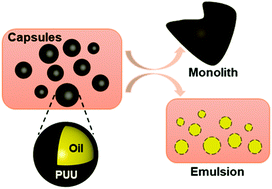
Polym. Chem., 2021,12, 2695-2700
https://doi.org/10.1039/D1PY00271F
A 3D printed drug delivery implant formed from a dynamic supramolecular polyurethane formulation
Prototype drug eluting implants have been 3D printed using a supramolecular polyurethane-PEG formulation. The implants are capable of releasing a pharmaceutical active with effective drug release over a period of up to 8.5 months.
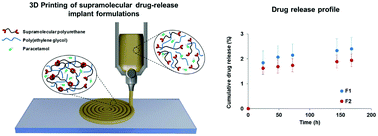
Polym. Chem., 2020,11, 3453-3464
https://doi.org/10.1039/D0PY00068J
Photo-patternable, stretchable and electrically conductive graft copolymers of poly(3-hexylthiophene)
A multifunctional conjugated polymer (CP) of poly(3-hexylthiophene) grafted with photo-patternable and stretchable side chains is reported.

Polym. Chem., 2019,10, 6278-6289
https://doi.org/10.1039/C9PY01428D
Improving heat transfer in fused deposition modeling with graphene enhances inter filament bonding
Creating polymeric materials with high thermal conductivity provides pathways to tailor the thermal transport of the 3D printed object during printing, effectively controlling heat transfer and offering a rational method to optimize properties.
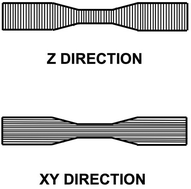
Polym. Chem., 2019,10, 5967-5978
https://doi.org/10.1039/C9PY00832B
Mechanochromic composite elastomers for additive manufacturing and low strain mechanophore activation
Composite silicone inks provide access to 3D-printable elastomers that are mechanochemically active at lower strains that single component analogs.
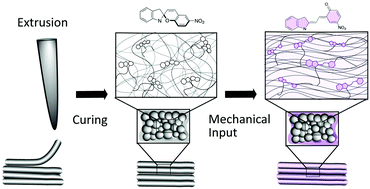
Polym. Chem., 2019,10, 5985-5991
https://doi.org/10.1039/C9PY01053J
Terpene- and terpenoid-based polymeric resins for stereolithography 3D printing
Thiol–ene ‘click’ reactions between terpenes and a four-arm thiol were utilized to produced thermoset 3D printed structures using vat photopolymerisation.
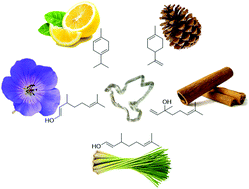
Polym. Chem., 2019,10, 5959-5966
https://doi.org/10.1039/C9PY00950G
Thiol–yne chemistry for 3D printing: exploiting an off-stoichiometric route for selective functionalization of 3D objects
An alkyne monomer, bis(propargyl) fumarate, is synthesized and mixed to a thiol monomer to produce DLP-3D printable formulations. Using off-stoichiometric formulations it is possible to print functionalizable objects.
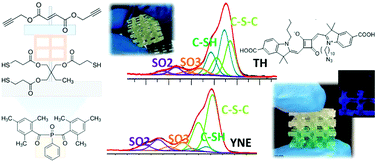
Polym. Chem., 2019,10, 5950-5958
https://doi.org/10.1039/C9PY00962K
Radical free crosslinking of direct-write 3D printed hydrogels through a base catalyzed thiol-Michael reaction
3D printed micelle-based hydrogels were mechanically stabilized and crosslinked through the base catalyzed thiol-Michael addition in PBS buffer, without the use of potentially cytotoxic radical chemistry.

Polym. Chem., 2019,10, 5979-5984
https://doi.org/10.1039/C9PY00953A
3D-extrusion printing of stable constructs composed of photoresponsive polypeptide hydrogels
Printing of novel linear polypeptide hydrogel bioinks and stabilisation of structures by post-printing UV-triggered crosslinking through catalyst free thiol–yne click chemistry of cysteine and propiolated 4-arm PEG.
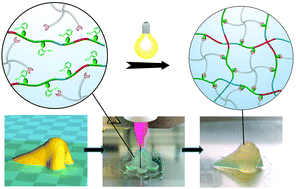
Polym. Chem., 2019,10, 4675-4682
https://doi.org/10.1039/C9PY00796B
3D printable non-isocyanate polyurethanes with tunable material properties
A green chemistry-based non-isocyanate polyurethanes with tunable material properties are synthesized by cyclic carbonate and click chemistry. Their excellent photopolymerization property enables light-based 3D printing of functional biomedical devices using polyurethanes.

Polym. Chem., 2019,10, 4665-4674
https://doi.org/10.1039/C9PY00999J
Poly(propylene fumarate) stars, using architecture to reduce the viscosity of 3D printable resins
Additive manufacturing is changing tissue engineering by offering pathways to otherwise unattainable, highly complex scaffold morphologies.
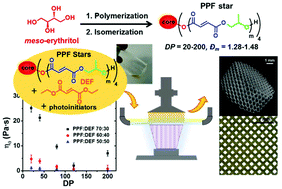
Polym. Chem., 2019,10, 4655-4664
https://doi.org/10.1039/C9PY00738E
3D printed self-adhesive PEGDA–PAA hydrogels as modular components for soft actuators and microfluidics
Hydrogel building blocks that are stimuli-responsive and self-adhesive could be utilized as a simple “do-it-yourself” construction set for soft machines and microfluidic devices.

Polym. Chem., 2019,10, 2015-2028
https://doi.org/10.1039/C9PY00211A
Visible-light-mediated, additive-free, and open-to-air controlled radical polymerization of acrylates and acrylamides
Polymerizing through oxygen in open vials without any additional additives expands the utility of photocontrolled iniferter polymerization.

Polym. Chem., 2019,10, 1585-1590
https://doi.org/10.1039/C9PY00022D
Vat photopolymerization of charged monomers: 3D printing with supramolecular interactions
Vat photopolymerization of a trimethylammonium ethyl acrylate chloride solution (TMAEA) resulted in a well-defined, fully soluble, 3D printed rook.
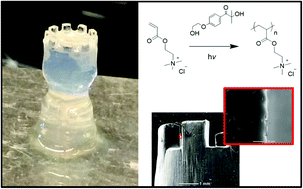
Polym. Chem., 2019,10, 1442-1451
https://doi.org/10.1039/C8PY01792A
About this collection
This special issue, Guest Edited by Professor Andrew J. Boydston (University of Wisconsin) and Professor Alshakim Nelson (University of Washington), presents some of the latest developments in new chemistries, chemical strategies, and materials for additive manufacturing.
Articles will be added to this collection as they are published.